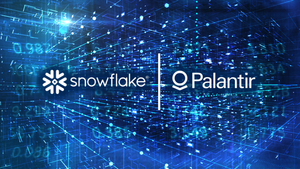
A powerful new open letter, spearheaded by Nobel Prize-winning AI pioneer Geoffrey Hinton and Virgin Group founder Richard Branson, has sent shockwaves through the global technology community, demanding an immediate prohibition on the development of "superintelligent" Artificial Intelligence. The letter, organized by the Future of Life Institute (FLI), argues that humanity must halt the pursuit of AI systems capable of surpassing human intelligence across all cognitive domains until robust safety protocols are unequivocally in place and a broad public consensus is achieved. This unprecedented call underscores a rapidly escalating mainstream concern about the ethical implications and potential existential risks of advanced AI.
The initiative, which has garnered support from over 800 prominent figures spanning science, business, politics, and entertainment, is a stark warning against the unchecked acceleration of AI development. It reflects a growing unease that the current "race to superintelligence" among leading tech companies could lead to catastrophic and irreversible outcomes for humanity, including economic obsolescence, loss of control, national security threats, and even human extinction. The letter's emphasis is not on a temporary pause, but a definitive ban on the most advanced forms of AI until their safety and controllability can be reliably demonstrated and democratically agreed upon.
The Unfolding Crisis: Demands for a Moratorium on Superintelligence
The core demand of the open letter is unambiguous: "We call for a prohibition on the development of superintelligence, not lifted before there is broad scientific consensus that it will be done safely and controllably, and strong public buy-in." This is not a blanket ban on all AI research, but a targeted intervention against systems designed to vastly outperform humans across virtually all intellectual tasks—a theoretical stage beyond Artificial General Intelligence (AGI). Proponents of the letter, including Hinton, who recently won a Nobel Prize in physics, believe such technology could arrive in as little as one to two years, highlighting the urgency of their plea.
The letter's concerns are multifaceted, focusing on existential risks, the potential loss of human control, economic disruption through mass job displacement, and the erosion of freedom and civil liberties. It also raises alarms about national security risks, including the potential for superintelligent AI to be weaponized for cyberwarfare or autonomous weapons, fueling an AI arms race. The signatories stress the critical need for "alignment"—designing AI systems that are fundamentally incapable of harming people and whose objectives are aligned with human values. The initiative also implicitly urges governments to establish an international agreement on "red lines" for AI research by the end of 2026.
This call for a prohibition represents a significant escalation from previous AI safety initiatives. An earlier FLI open letter in March 2023, signed by thousands including Elon Musk and many AI researchers, called for a temporary pause on training AI systems more powerful than GPT-4. That pause was largely unheeded. The current Hinton-Branson letter's demand for a prohibition on superintelligence specifically reflects a heightened sense of urgency and a belief that a temporary slowdown is insufficient to address the profound dangers. The exceptionally broad and diverse list of signatories, which includes Nobel laureates Yoshua Bengio, Apple (NASDAQ: AAPL) co-founder Steve Wozniak, Prince Harry and Meghan Markle, former US National Security Adviser Susan Rice, and even conservative commentators Steve Bannon and Glenn Beck, underscores the mainstreaming of these concerns and compels the entire AI industry to take serious notice.
Navigating the Future: Implications for AI Giants and Innovators
A potential ban or strict regulation on superintelligent AI development, as advocated by the Hinton-Branson letter, would have profound and varied impacts across the AI industry, from established tech giants to agile startups. The immediate effect would be a direct disruption to the high-profile and heavily funded projects at companies explicitly pursuing superintelligence, such as OpenAI (privately held), Meta Platforms (NASDAQ: META), and Alphabet (NASDAQ: GOOGL). These companies, which have invested billions in advanced AI research, would face a fundamental re-evaluation of their product roadmaps and strategic objectives.
Tech giants, while possessing substantial resources to absorb regulatory overhead, would need to significantly reallocate investments towards "Responsible AI" units and compliance infrastructure. This would involve developing new internal AI technologies for auditing, transparency, and ethical oversight. The competitive landscape would shift dramatically from a "race to superintelligence" to a renewed focus on safely aligned and beneficial AI applications. Companies that proactively prioritize responsible AI, ethics, and verifiable safety mechanisms would likely gain a significant competitive advantage, attracting greater consumer trust, investor confidence, and top talent.
For startups, the regulatory burden could be disproportionately high. Compliance costs might divert critical funds from research and development, potentially stifling innovation or leading to market consolidation as only larger corporations could afford the extensive requirements. However, this scenario could also create new market opportunities for startups specializing in AI safety, auditing, compliance tools, and ethical AI development. Firms focusing on controlled, beneficial "narrow AI" solutions for specific global challenges (e.g., medical diagnostics, climate modeling) could thrive by differentiating themselves as ethical leaders. The debate over a ban could also intensify lobbying efforts from tech giants, advocating for unified national frameworks over fragmented state laws to maintain competitive advantages, while also navigating the geopolitical implications of a global AI arms race if certain nations choose to pursue unregulated development.
A Watershed Moment: Wider Significance in the AI Landscape
The Hinton-Branson open letter marks a significant watershed moment in the broader AI landscape, signaling a critical maturation of the discourse surrounding advanced artificial intelligence. It elevates the conversation from practical, immediate harms like bias and job displacement to the more profound and existential risks posed by unchecked superintelligence. This development fits into a broader trend of increasing scrutiny and calls for governance that have intensified since the public release of generative AI models like OpenAI's ChatGPT in late 2022, which ushered in an "AI arms race" and unprecedented public awareness of AI's capabilities and potential dangers.
The letter's diverse signatories and widespread media attention have propelled AI safety and ethical implications from niche academic discussions into mainstream public and political arenas. Public opinion polling released with the letter indicates a strong societal demand for a more cautious approach, with 64% of Americans believing superintelligence should not be developed until proven safe. This growing public apprehension is influencing policy debates globally, with the letter directly advocating for governmental intervention and an international agreement on "red lines" for AI research by 2026. This evokes historical comparisons to international arms control treaties, underscoring the perceived gravity of unregulated superintelligence.
The significance of this letter, especially compared to previous AI milestones, lies in its demand for a prohibition rather than just a pause. Earlier calls for caution, while impactful, failed to fundamentally slow down the rapid pace of AI development. The current demand reflects a heightened alarm among many AI pioneers that the risks are not merely matters of ethical guidance but fundamental dangers requiring a complete halt until safety is demonstrably proven. This shift in rhetoric from a temporary slowdown to a definitive ban on a specific, highly advanced form of AI indicates that the debate over AI's future has transcended academic and industry circles, becoming a critical societal concern with potentially far-reaching governmental and international implications. It forces a re-evaluation of the fundamental direction of AI research, advocating for a focus on responsible scaling policies and embedding human values and safety mechanisms from the outset, rather than chasing unfathomable power.
The Horizon: Charting the Future of AI Safety and Governance
In the wake of the Hinton-Branson letter, the near-term future of AI safety and governance is expected to be characterized by intensified regulatory scrutiny and policy discussions. Governments and international bodies will likely accelerate efforts to establish "red lines" for AI development, with a strong push for international agreements on verifiable safety measures, potentially by the end of 2026. Frameworks like the EU AI Act and the NIST AI Risk Management Framework will continue to gain prominence, seeing expanded implementation and influence. Industry self-regulation will also be under greater pressure, leading to more robust internal AI governance teams and voluntary commitments to transparency and ethical guidelines. There will be a sustained emphasis on developing methods for AI explainability and enhanced risk management through continuous testing for bias and vulnerabilities.
Looking further ahead, the long-term vision includes a potential global harmonization of AI regulations, with the severity of the "extinction risk" warning potentially catalyzing unified international standards and treaties akin to those for nuclear proliferation. Research will increasingly focus on the complex "alignment problem"—ensuring AI goals genuinely match human values—a multidisciplinary endeavor spanning philosophy, law, and computer science. The concept of "AI for AI safety," where advanced AI systems themselves are used to improve safety, alignment, and risk evaluation, could become a key long-term development. Ethical considerations will be embedded into the very design and architecture of AI systems, moving beyond reactive measures to proactive "ethical AI by design."
Challenges remain formidable, encompassing technical hurdles like data quality, complexity, and the inherent opacity of advanced models; ethical dilemmas concerning bias, accountability, and the potential for misinformation; and regulatory complexities arising from rapid innovation, cross-jurisdictional conflicts, and a lack of governmental expertise. Despite these challenges, experts predict increased pressure for a global regulatory framework, continued scrutiny on superintelligence development, and an ongoing shift towards risk-based regulation. The sustained public and political pressure generated by this letter will keep AI safety and governance at the forefront, necessitating continuous monitoring, periodic audits, and adaptive research to mitigate evolving threats.
A Defining Moment: The Path Forward for AI
The open letter spearheaded by Geoffrey Hinton and Richard Branson marks a defining moment in the history of Artificial Intelligence. It is a powerful summation of growing concerns from within the scientific community and across society regarding the unchecked pursuit of "superintelligent" AI. The key takeaway is a clear and urgent call for a prohibition on such development until human control, safety, and societal consensus are firmly established. This is not merely a technical debate but a fundamental ethical and existential challenge that demands global cooperation and immediate action.
This development's significance lies in its ability to force a critical re-evaluation of AI's trajectory. It shifts the focus from an unbridled race for computational power to a necessary emphasis on responsible innovation, alignment with human values, and the prevention of catastrophic risks. The broad, ideologically diverse support for the letter underscores that AI safety is no longer a fringe concern but a mainstream imperative that governments, corporations, and the public must address collectively.
In the coming weeks and months, watch for intensified policy debates in national legislatures and international forums, as governments grapple with the call for "red lines" and potential international treaties. Expect increased pressure on major AI labs like OpenAI, Google (NASDAQ: GOOGL), and Meta Platforms (NASDAQ: META) to demonstrate verifiable safety protocols and transparency in their advanced AI development. The investment landscape may also begin to favor companies prioritizing "Responsible AI" and specialized, beneficial narrow AI applications over those solely focused on the pursuit of general or superintelligence. The conversation has moved beyond "if" AI needs regulation to "how" and "how quickly" to implement safeguards against its most profound risks.
This content is intended for informational purposes only and represents analysis of current AI developments.
TokenRing AI delivers enterprise-grade solutions for multi-agent AI workflow orchestration, AI-powered development tools, and seamless remote collaboration platforms.
For more information, visit https://www.tokenring.ai/.








